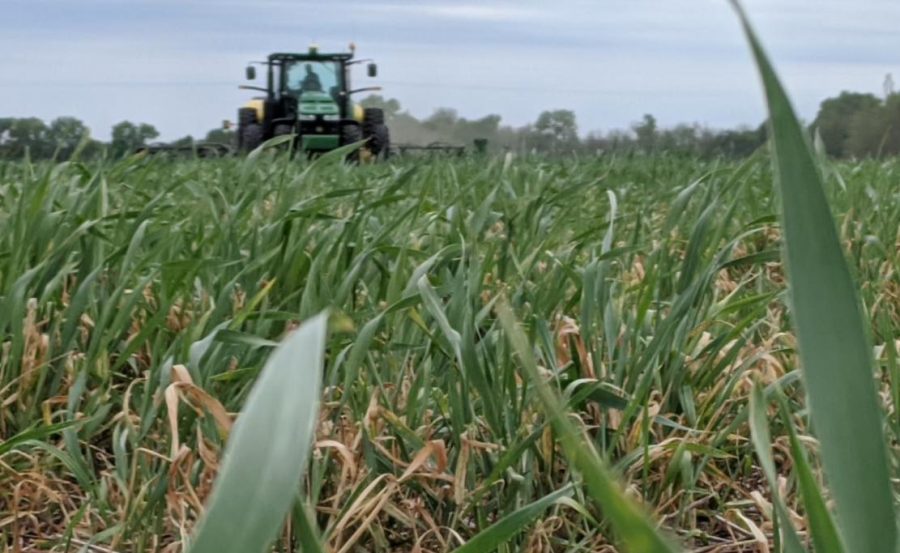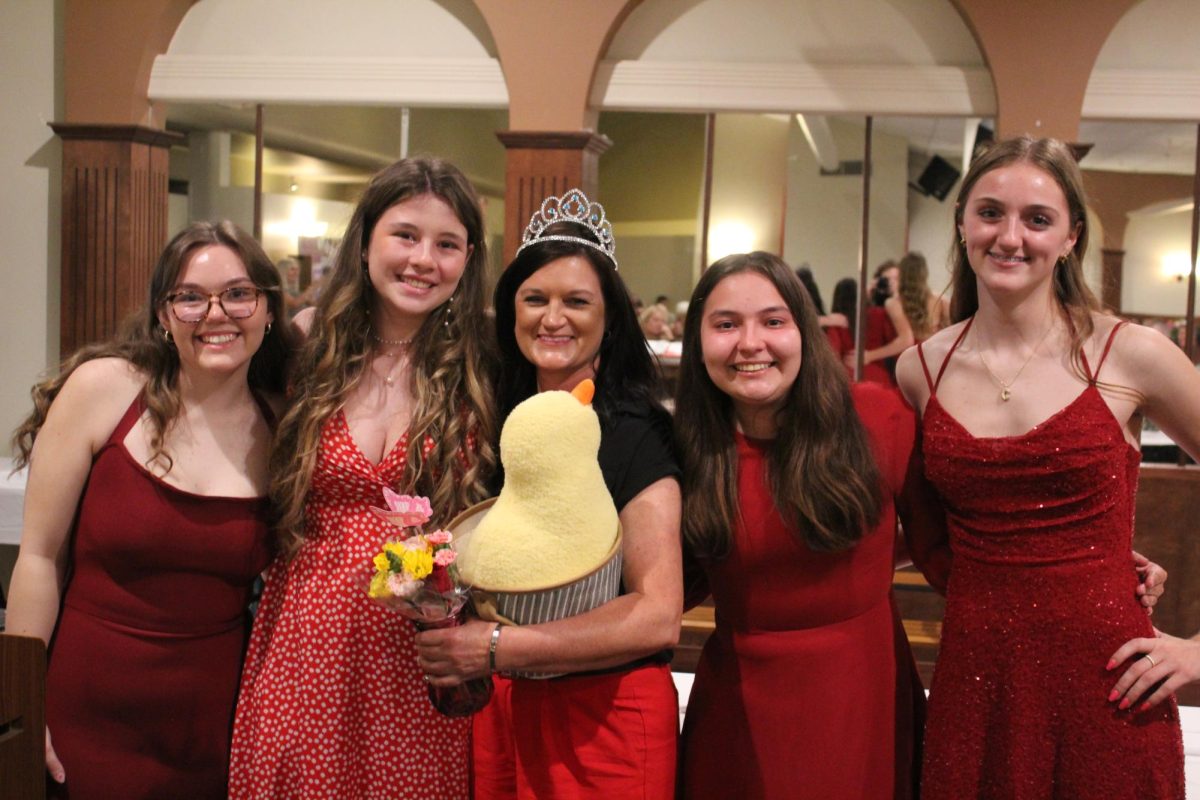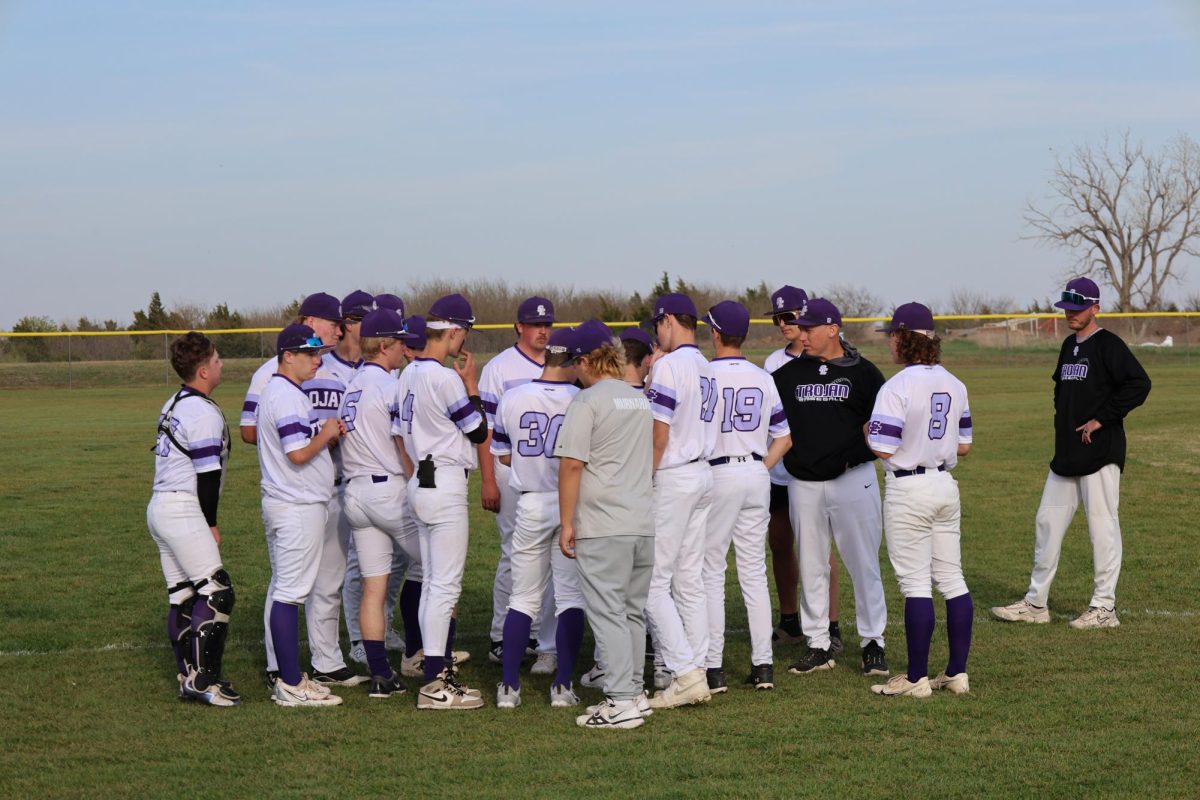Regenerative Farming: An Interview With Agronomist Garrett Kennedy
Pictured is Garrett Kennedy, working on the field and managing farm equipment.
November 8, 2022
Every day on the way to school, I look out at the fields spanning every direction as far as I can see, and I can’t help but think of how these are the very same fields that help to put food on the table of every American household. Since the founding of our nation, we have had deep roots in an agricultural way of life that has built the United States into what it is today. In the 1800s, over 90% of the U.S. population lived on farms. (PBS.org) By 1900, during the peak of the American Industrial Revolution, that number had dropped to just under 40%. Today, that number sits at just less than 2%. (FB.org) Despite the staggering decrease in farm ownership in America, farm size has continued to increase over the years with the development of more advanced and industrialized farming technologies. With the rapid development of agriculture also came the adaptation to hardships. From natural causes such as droughts and floods to human causes like economics, harmful practices, and climate change, we have faced each issue head-on up until now with the most recent agrarian crisis: the rapid degradation of arable land.
According to geologist David Montgomery, we lose roughly 23 billion tons of fertile soil every year. By that rate, all arable land on Earth will be lost within 150 years if not sooner from the various effects of climate change. This has made one thing very clear; the agricultural practices that we currently use need to change. The question is, who are we to trust to make these changes?
Agronomist Garret Kennedy, a local Kansan working on Knopf Farms, is on the path toward sustainability. Kennedy works as the agronomist for Justin Knopf, a regenerative farmer in the Salina area who practices no-till farming among other applications.
“I think the future of agriculture is resiliency. We currently in Saline County are coming off a record dry year and we get these intense 8 inches of rain at the end of May. We have to have a system that can handle that fluctuation. I think that the idea of building back the resiliency of that system is the future. When we go from record-yielding crops to low-yield crops, it affects the price of your food in the store just as much as it does us.” Said Kennedy.
No-till farming, specifically, is an extremely important practice for working toward a sustainable agricultural environment, as the working of biomass deep into the fields through tilling leaves the soil bare in the long run. This is because the soil before tilling has an intricate network of roots and organisms that can hold and absorb nutrients and water, and when that network is disturbed, the soil loses that ability to absorb as much as before.
Despite the obvious benefits of no-till farming, there are also drawbacks and complications with the process. The use of herbicides often becomes more common in the practice of no-till to combat weed growth in the field, although it isn’t always necessary. Kennedy had this to say on the matter; “There are pros and cons to everything. Every tillage pass costs about half an inch of moisture. No-till management saves this and gives more consistent results at harvest. It’s not simple, however. It does require in certain instances more herbicide, however, it builds a better microbial community to combat that. It’s not a black-and-white answer.”
However, farmers have been combating the use of herbicides as is. With advancements in the development of Genetically Modified Organisms (GMO) crops to the use of cover crops, farmers have found more and more ways to reduce the number of synthetic herbicides used on the farm. However, both of these methods can present troubles to farmers, as negative stigma towards GMOs and overall costs of cover crops have led to lower incomes for farmers. The issue at hand, however, is less of a physical problem than you might think.
“I think it’s still an educational issue. Most people are two generations away from a family farm and there’s such a huge disconnect between what goes on on the farm. GMOs, specifically roundup-ready crops, have adapted more to the use of no-till farming. It’s better for the farmers and the nutrient density of crops. The use of Bt-corn has protected the quality of our corn crop. There are some definite advantages there that as we’ve gotten farther from the farm, we just don’t know what’s actually going on.” Said Kennedy on the use of GMOs.
On the other hand, cover crops have become more of an economic issue than anything else. The primary challenge with these crops is that they simply do not turn a profit, simply because they are only there for improving biodiversity, preventing weed growth, and feeding the soil. This poses the question of whether or not herbicides are still the most effective at removing weeds.
Mr. Kennedy stated, “I think herbicides are a necessary tool. However, there are more tools in the toolbox. On the farm, we have used cover crops for the last 5 years, and have found we have been safe from herbicide passes from the use of a cover crop. While the use of herbicides is necessary at certain times, we can also use different practices as well.”
Creating a sustainable agricultural industry has become one of the most important challenges of the 21st century. Implementing and improving upon regenerative practices that we already have is not only up to our farmers, but our country as a whole. By supporting these methods online, in stores, and at the voting polls, we can only hope that we can create a bright future for agriculture.
Kennedy had this to say for the upcoming future and sustainability: “As I mentioned, resiliency is the goal. On the farm, we’ve used cover crops as a way to have a living root all year. We have a diverse crop rotation, so the soil isn’t the same crop every year. We’ve also been playing around with introducing livestock onto the farm, although we haven’t mastered that, as it brings on a whole new set of management challenges. We’ve faced a lot of challenges these past years, and when we have these years with so little rainfall, we have to ask, how do we store and effectively capture the store of that rainfall? What else can we do to help that system?”







